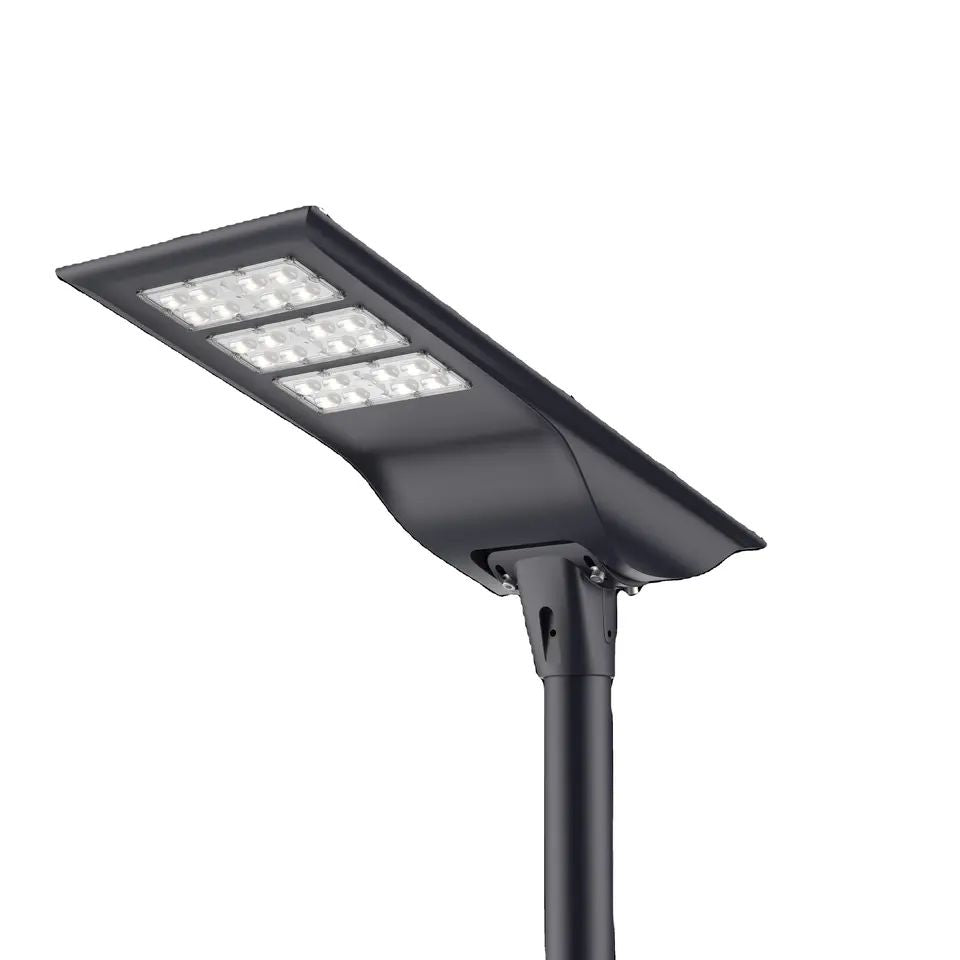
Questions and answers about Solar Street lights
Share
PRICE
Do not expect to find a cheap and good solar lamp because it is not possible in terms of construction.
Watts
Why is our light fixture so few watts and at the same time so expensive?
Because we tell you the truth in the first place and some others lie to you.
The watts you see on other sites are not valid. 300W and 1200W do not exist in solar panels. 1200 watts are used for lights in stadium areas and not solar panels you mean.
Even if they say 120W, ask for the total lumens it puts out and you will see that it is not more than 1000lumens, which means that if the led smd 5050 puts out 150lumens/w, it should be 150lumens/wx 120W=18000 lumens in total. If you find such a lamp for less than €600 you will be lucky.
batteries
Cheap lights smaller battery capacity so more battery cycles in the unit of time as a result of which the battery breaks down much sooner and you incur costs to change it.¨A good solar light should have at least 30mha capacity at 3.2V( depending on the Watts)
CONSTRUCTION
Avoid cheap frame constructions (Plastic). We are talking about a solar lamp which means that we want the sun to see it and we know the consequences of exposing plastic to the sun. At some point it will dry out and break and fall down if it doesn't crack and damage the waterproofing.
PHOTOVOLTAIC PANEL
There are two types of photovoltaic panels: The polycrystalline collector (low efficiency) and the monocrystalline (high efficiency).
On rainy days, we want the battery to be fully charged with little or no sunlight, and for this reason our lamp can never "run out" of battery due to its monocrystalline panel.
Differences of monocrystalline and polycrystalline collector
Temperature resistance
Monocrystalline solar panels are known to be more resistant to temperature changes than polycrystalline panels.
This is due to the fact that monocrystalline panels are made from a single crystal, which allows them to maintain their performance even at high temperatures.
On the other hand, polycrystalline collectors are made from multiple crystals, which makes them more vulnerable to losing efficiency as temperatures rise.
Performance
Monocrystalline collectors generally have a higher efficiency rating of over 19%, while polycrystalline collectors have an efficiency rating of 13-16% and sometimes up to 18%.
Polycrystalline photovoltaics are less expensive to manufacture than their monocrystalline counterparts, as the solidification process is less demanding. However, they are also less efficient, as the multiple small crystals in the silicon can create boundaries that block the flow of electrons.
Monocrystalline solar panels are known for their high efficiency and long life due to the purity of the silicon used in their construction.
Yours sincerely
Ioannis Bougatsas
Mechanical Engineer T.E energy sector
